Hypermobility in runners. The challenges and benefits of flexibility
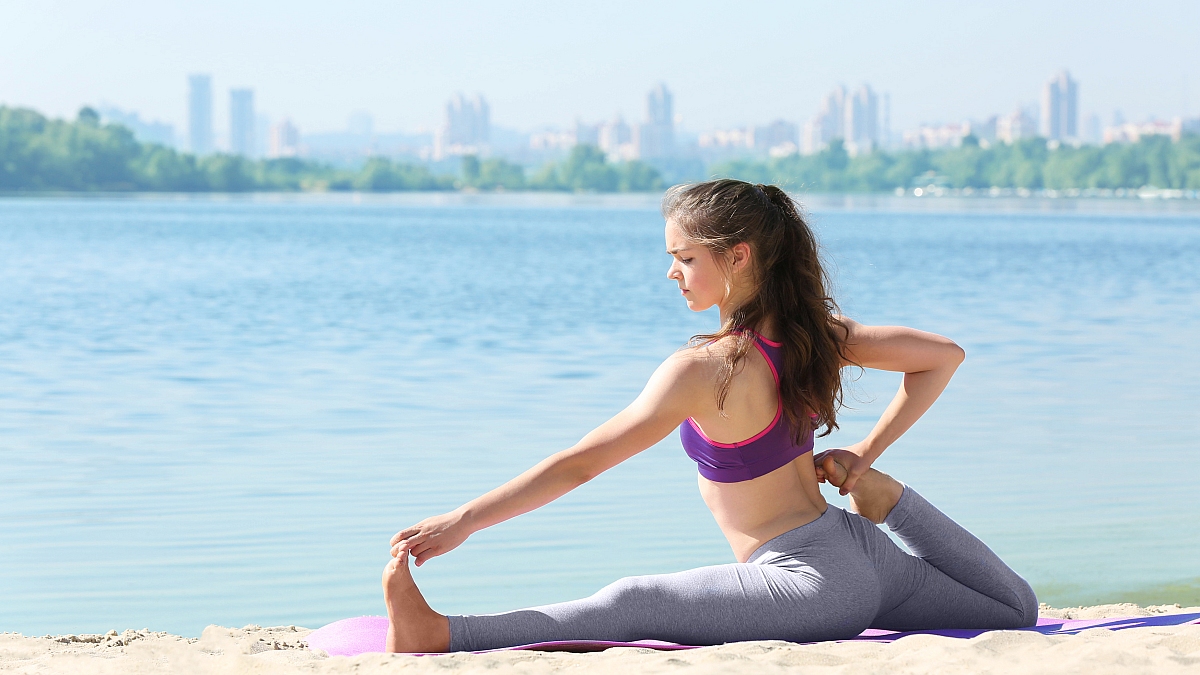
Movement is an integral element of human life. It would seem that the more of it, the better. Unfortunately, hyperactivity can be both a blessing and a curse. While some may marvel at its ability to be incredibly flexible, for others it can lead to serious injuries and chronic pain.
What is hypermobility?
Joints and periarticular elements (muscles, ligaments, capsules) are responsible for movement in the body. They determine the range of motion, limiting it to avoid damage. When the ranges exceed the established values, we are dealing with hypermobility. In Poland, its occurrence is reported in 12-24% of the population and it more often affects women. It is characterized by very flexible connective tissue, which allows greater joint mobility. The causes of its occurrence are not fully known, although they are probably related to genetic and hereditary factors.
There is a simple test developed by Prof. Peter Beighton, thanks to which we can check whether we are dealing with excessive joint mobility.
- touching the ground with full hands with straight knees (1 point)
- hyperextension of the elbow joints >10′ (1 point per joint)
- hyperextension of the knee joints >10′ (1 point per joint)
- passively drawing the thumb to the palmar surface of the forearm (1 point per thumb)
- passive bending of the little finger of the hand to an angle of 90′ relative to the outer part of the hand (1 point per finger)

If we are able to perform the above movements and obtain 4 or more points (out of 9), it may (but does not have to) indicate hypermobility. For a proper diagnosis, it is best to see a doctor or physiotherapist.
The impact of hypermobility on runners
Hypermobility can impact runners’ training and health in two ways. It can be both an advantage and, unfortunately, a challenge. One of the most common problems associated with it is increased foot pronation, i.e. excessive internal rotation. Overpronation can lead to injuries such as shin splints, plantar fasciitis, and knee pain. It is also common to notice that compared to most athletes, those with hyperactivity have difficulty feeling the correct movement and muscle activation pattern. Their internal feedback signals are often quite weak. However, it seems that you just need to find the right combination of tips and exercises to develop good movement patterns. What is important for the future is that you need to feel how to move in the correct way.
The difference between injuries in hypermobile runners and non-hypermobile runners is that treatment and rehabilitation in the former may take longer. This is because hypermobile athletes need more time to learn to control their range of motion. It’s worth noting, however, that being overly mobile doesn’t mean you shouldn’t stretch. An overly mobile person may still have stiff muscles, in which case it won’t hurt to loosen up after a workout, as long as it isn’t painful. You need to be careful not to overdo it, as overstretching your joints can be harmful.
Hypermobility is often associated with chronic joint pain, back pain, joint subluxations or dislocations, mild tissue damage, thin skin prone to bruising, and flat feet. The latter should be especially important for runners – exercises and properly selected insoles will be perfect here.
The positive sides of hypermobility
If you learn to control your body properly, you still have a greater range of motion, and this can help you make smoother and more efficient movements while running. The flexibility of muscles and ligaments combined with stability help avoid injuries related to excessive muscle tension. Moreover, flexibility = better adaptation to various surfaces, relieving pressure on joints, and faster regeneration after training. Taking care of stability will ensure better stability maneuverability and body feel: it will be easier to adjust your movements while running. This can help you avoid obstacles, react faster to changes in terrain, and increase maneuverability. All of the above advantages add up potential for higher speed thanks to the increased range of motion and better adaptation to various conditions on the route.
How to deal with hypermobility as a runner?
If you are a runner with hypermobility, there are several ways to reduce your risk of injury and improve your performance. Here are some practical tips:
- Consult your doctor or physiotherapist: If you suspect that you are hypermobile and are experiencing pain or other discomfort, it is important to consult a professional. They will help you identify your individual needs and adapt your training and rehabilitation program.
- Focus on stabilization: Hypermobile runners should focus on strengthening the muscles that stabilize joints, such as the core muscles of the abdominals, back and glutes. Exercises that strengthen these areas will help with movement control.
- Avoid overpronation: If you are prone to this, it is important to choose the right running shoes that provide adequate support for your feet.
- Isolated stretching: Stretching techniques should isolate tight muscles without putting stress on the surrounding joints. For example, stretching your hip flexors should not lead to excessive lumbar lordosis (e.g. you can try stretching them while lying on your stomach, bringing your heel to your buttock).
- Muscle activation before running: this advice doesn’t just apply to hypermobile people. Spend a little more time on a dynamic leg warm-up to activate the muscle groups that will be involved in the training. The aim is to stimulate the neuromuscular system and activate as many motor units as possible.
Below are examples of exercises to stabilize the most important parts:
Exercise 1. Strengthens the deep abdominal muscles and lower back.
While kneeling, raise your opposite arm and leg simultaneously so that your body forms one line. Watch out for hyperextension in the elbow joints.


Exercise 2. Strengthens the lower abdominal parts.
Support your front on the roller – bringing your knees to your chest.


Exercise 3. Strengthens the buttocks and hamstrings.
When lying on your back, legs resting on the roller – raise the pelvis so that the body forms one line. Be careful not to hyperextend the lumbar section.
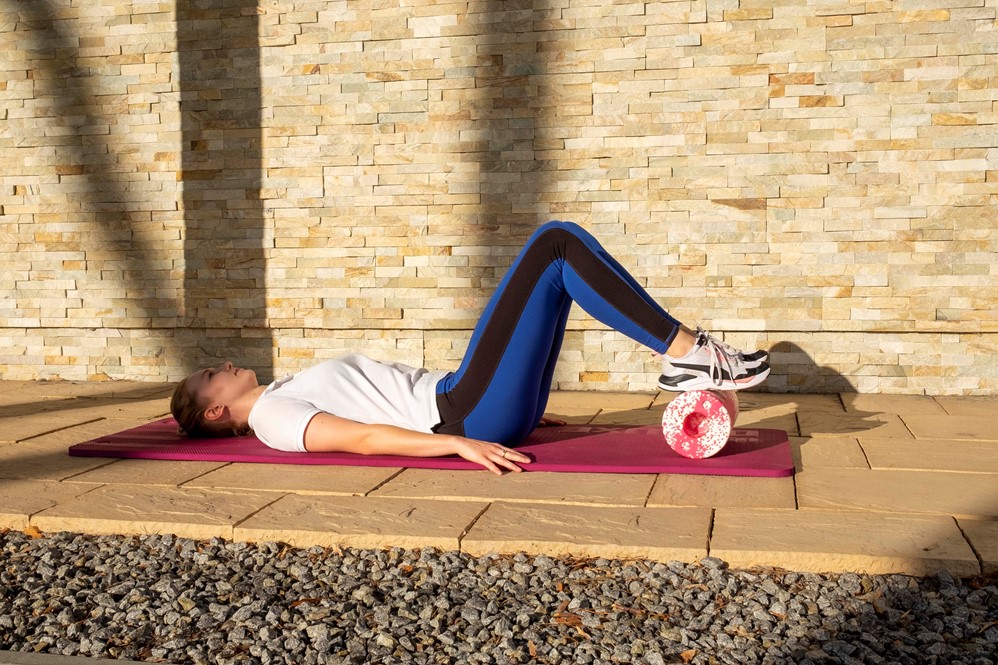
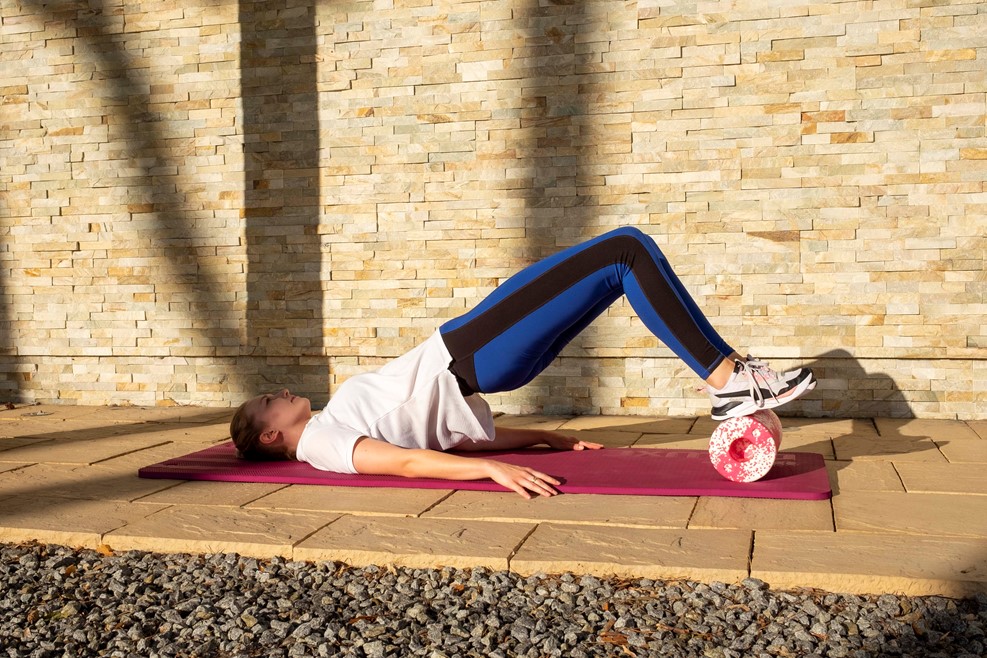
Exercise 4. Stabilization of the ankle joint.
The tape is hooked to the toes that are as much dorsiflexed as possible. We plantar flex the foot and resist it with our hands.
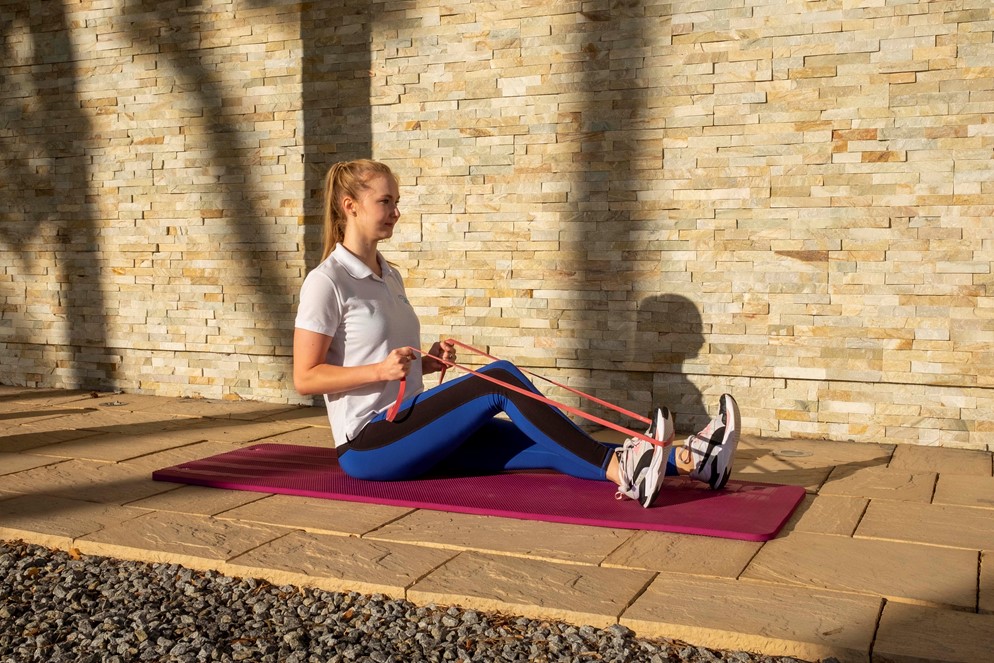
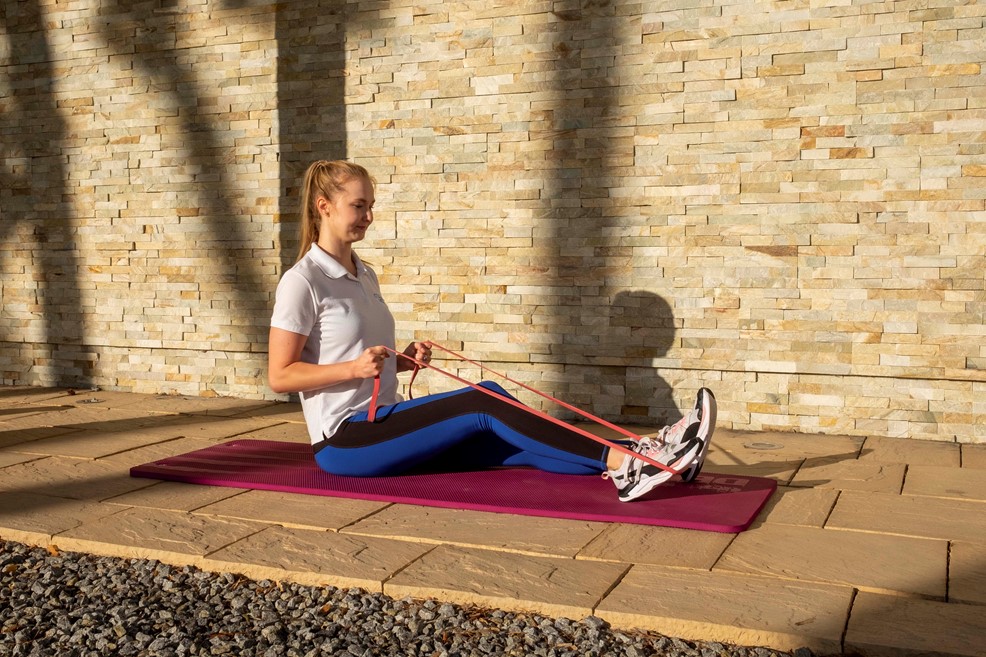
Hypermobility can be a challenge for runners, but with the right approach and medical care, it can be managed. It’s important to find the right balance between stretching and strengthening your muscles. Understanding your body and tailoring your training to your individual needs will help you enjoy running without the unnecessary risk of injury.
